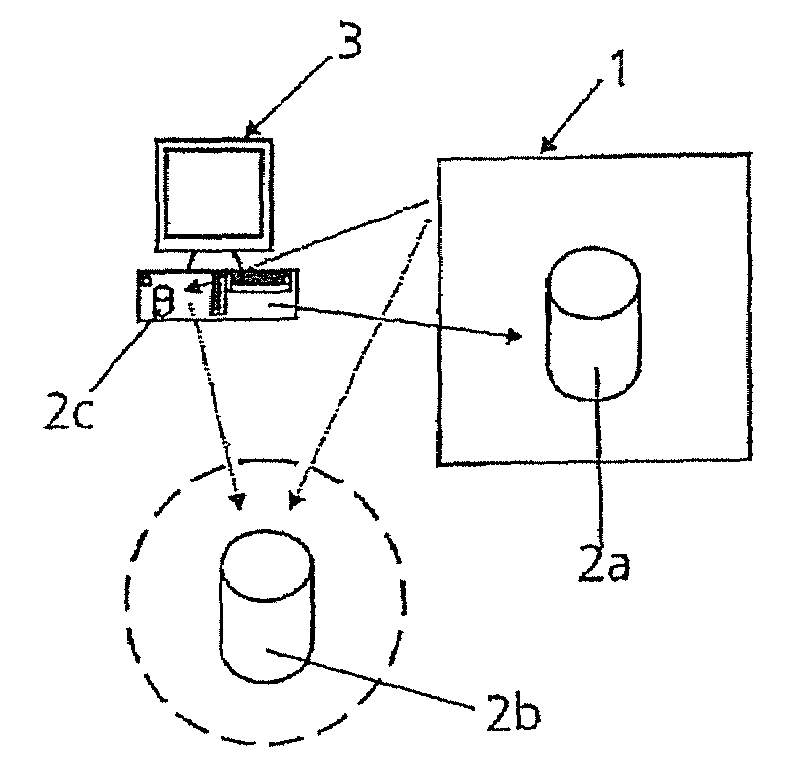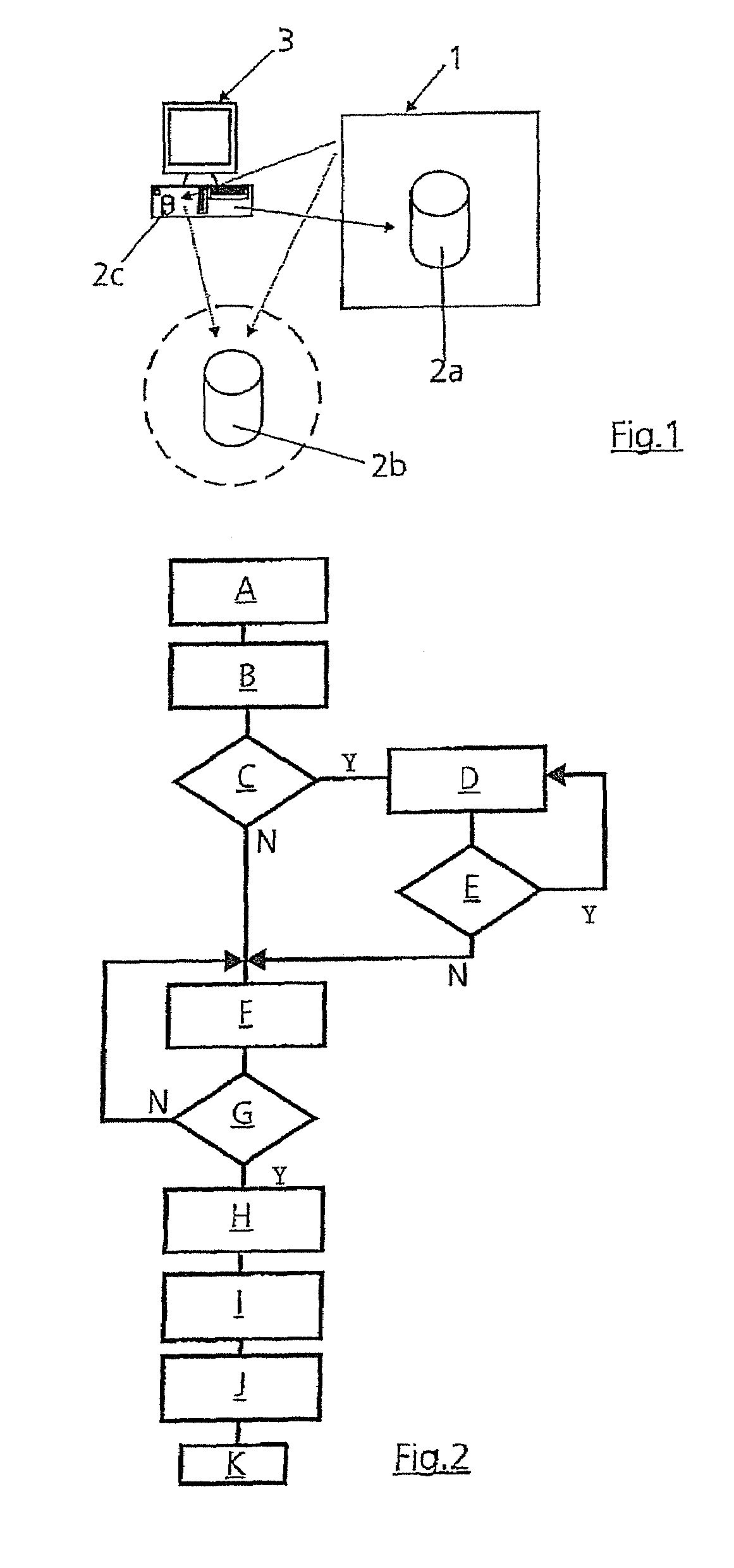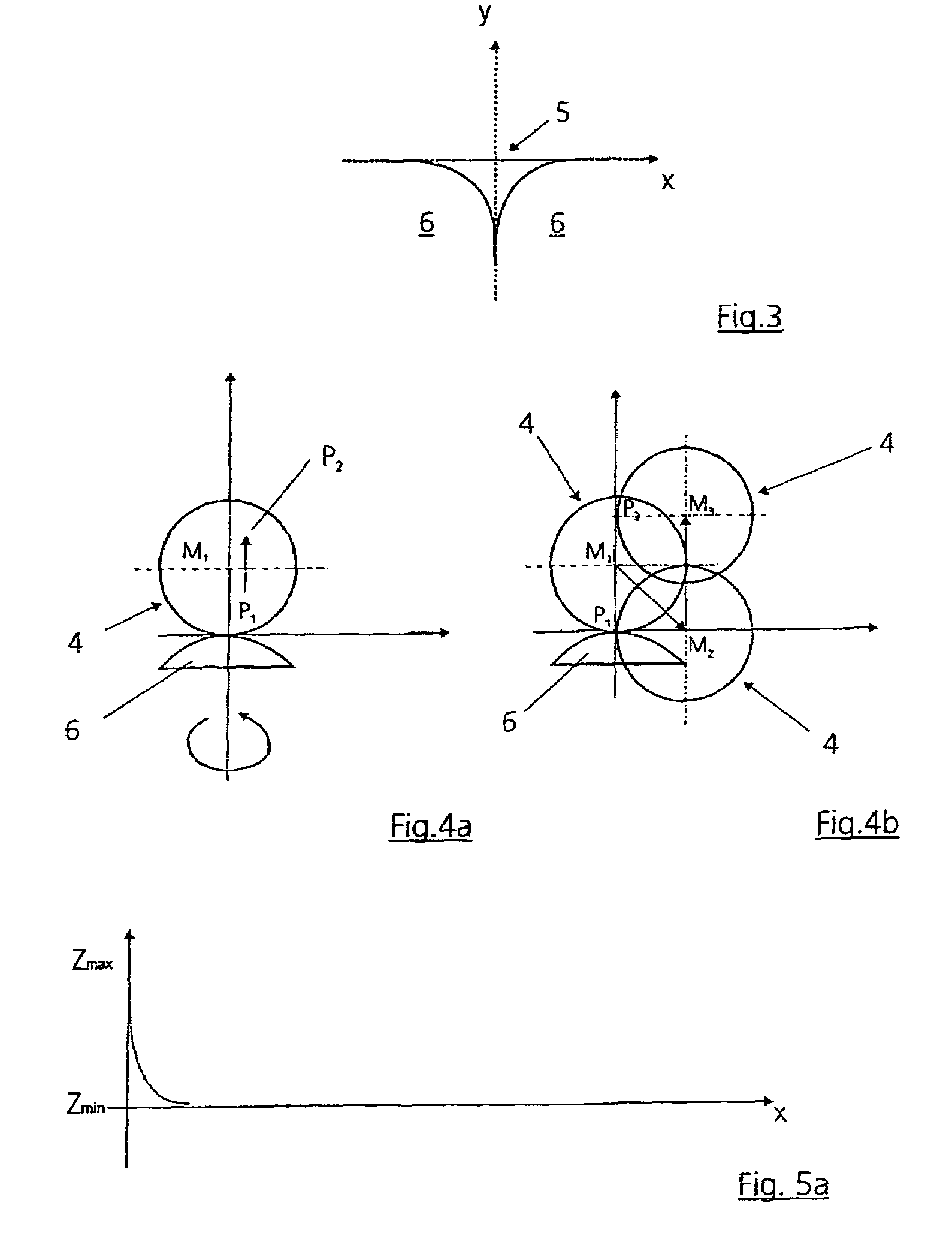Method for producing an aspherical optical element
a technology of optical elements and aspherical lenses, applied in the direction of electrical programme control, program control, instruments, etc., can solve the problems of limited possibilities for modification, correction and movement dynamics, and the grinding results previously achieved with such machines generally did not meet the requirements, and the production of effective series production of highly accurate aspheres, in particular aspherical lenses, is rarely possible or not possible at all, so as to improve the accuracy of asphere grinding results and achieve high accuracy. , the effect o
- Summary
- Abstract
- Description
- Claims
- Application Information
AI Technical Summary
Benefits of technology
Problems solved by technology
Method used
Image
Examples
Embodiment Construction
[0032]As represented in FIG. 1, a CNC wet-grinding machine 1 accesses NC data 2a, 2b, 2c (dotted arrows) in order to machine a workpiece; in the present exemplary embodiment it is intended to produce a lens with an aspherical form, in particular for use in projection lenses for microlithography for the production of semiconductor elements. The CNC wet-grinding machine 1 may receive the necessary NC data 2a from storage media of its own or by direct programming. Furthermore, the CNC grinding machine 1 could also obtain the NC data 2b in particular via a network (for example intranet, LAN or the like—indicated in FIG. 1 by dashed line) or via an RS232 interface from a server (not represented) or directly access the database 2c of a computer system 3. In the present exemplary embodiment, a computer program which implements the NC data generating method according to the invention runs on the computer system 3. In this case, NC data 2a, 2b, 2c for the production of an aspherical form are...
PUM
 Login to View More
Login to View More Abstract
Description
Claims
Application Information
 Login to View More
Login to View More - R&D
- Intellectual Property
- Life Sciences
- Materials
- Tech Scout
- Unparalleled Data Quality
- Higher Quality Content
- 60% Fewer Hallucinations
Browse by: Latest US Patents, China's latest patents, Technical Efficacy Thesaurus, Application Domain, Technology Topic, Popular Technical Reports.
© 2025 PatSnap. All rights reserved.Legal|Privacy policy|Modern Slavery Act Transparency Statement|Sitemap|About US| Contact US: help@patsnap.com



